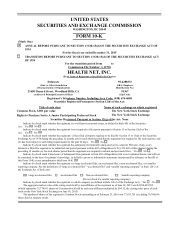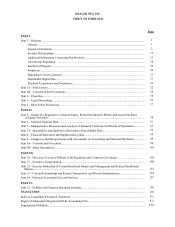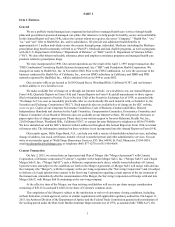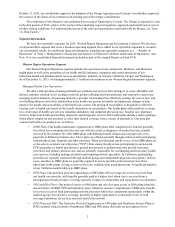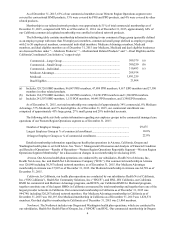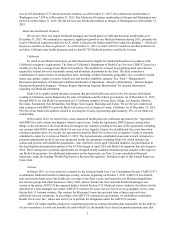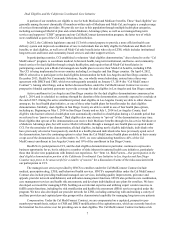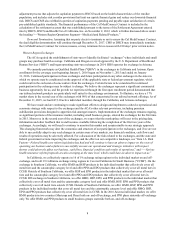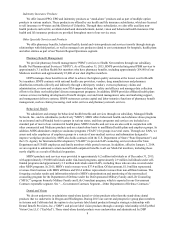Health Net 2015 Annual Report Download - page 5
Download and view the complete annual report
Please find page 5 of the 2015 Health Net annual report below. You can navigate through the pages in the report by either clicking on the pages listed below, or by using the keyword search tool below to find specific information within the annual report.3
network specialty care, but there are no out of network benefits other than emergency care. In some, but not
all, plans members select a PCP that coordinates most care.
The Patient Protection and Affordable Care Act and the Health Care and Education Reconciliation Act of 2010
(collectively, the “ACA”) has altered and continues to alter the dynamics of the health care insurance industry. The
breadth and scope of these changes have presented us with a number of new and substantial business opportunities as
well as a number of strategic and operational challenges. Among other things, the ACA required the modification of
existing commercial products and the development of new products beginning with the 2014 benefit year. In response,
we developed new health plans both for the ACA’s individual health insurance exchanges and for off-exchange use that
met the ACA’s essential health benefits standard and other requirements. These products incorporated new cost sharing
features as required by the ACA. Whether sold through the exchange or off-exchange, these products also had to meet
the requirements of four “metal” tiers - Bronze, Silver, Gold and Platinum. Plans offered in each tier have to achieve a
prescribed actuarial value. On the exchanges we must offer at least one silver and one gold product. We also offer
catastrophic plans. For additional information on the exchanges, see "—Western Region Exchanges."
In recent years, the health care industry has seen a renewed interest in the managed care model. The evolving
health care landscape, including the changes presented by the ACA and related state initiatives and regulations, have,
among other things, resulted in increased popularity of health care delivery systems that focus on coordination of care
and cost management, particularly through the use of fixed payment models, otherwise referred to as capitation. A
recent example is California’s Coordinated Care Initiative, or “CCI,” which required that California Medicaid (“Medi-
Cal”) beneficiaries in the participating CCI counties receive their benefits from managed care health plans. For
additional information on the CCI, see "—Dual Eligibles and the California Coordinated Care Initiative."
In addition, we believe that economic pressures have caused customers (both individuals and employer groups)
increasingly to make health insurance purchasing decisions based on “value versus choice.” We believe that many
customers are choosing health plans that offer better financial value over health plans that may offer broader networks
that require higher premiums. We have developed and are selling products using tailored networks to meet this need.
These tailored network products use dedicated provider networks that share our commitment to quality health care and
affordability. These products also incorporate benefit levels that help ensure our members have access to the care they
need.
We offer tailored network HMO, EPO or HSP products throughout our Western Region Operations segment.
These products are structured in a variety of ways. They may include a tiered provider option, be organized in
conjunction with a strategic provider partner or be created specifically for particular populations and geographically
proximate networks. For example, our HMO CommunityCareSM product offers a network of HMO doctors, specialists
and hospitals designed to meet the unique needs of the individual exchange markets. Our Salud Con Health NetSM
product line is a suite of affordable plans developed for the Latino community. In addition, we have developed tailored
network products with strategic provider partners in California, Arizona, Oregon and Washington, and we have
developed customized products for large employer groups with a large geographic distribution within a particular state.
We believe our strength in tailored network products has been an important factor in our performance on the health
insurance exchanges, and accordingly we have been fostering growth in our exchange based business utilizing tailored
networks.
We assume both underwriting and administrative expense risk in return for the premium revenue we receive from
our HMO, POS, PPO/EOA and HSP products. In California, under a capitation payment model, we pay a provider
group a fixed amount per member on a regular basis, usually monthly, and the provider group accepts the risk of the
frequency and cost of member utilization of professional services. We believe that capitation payment models
incentivize providers to focus more on preventive care and cost management. Under these payment models, we believe
members are more likely to receive a comprehensive array of appropriate and timely preventive services than in fee-
for-service models, thereby helping to improve members’ health, reduce the need for more costly acute care
interventions and, in so doing, lower the rate of growth of health care costs. With its focus on improving patient care
through shared risk amongst providers and health insurers, the capitation payment model shares certain similarities with
the Accountable Care Organization (“ACO”) model that is one of the ACA’s primary initiatives for improving the
quality and efficiency of health care delivery systems. See “—Provider Relationships” for additional information about
our capitation fee arrangements and “Item 1A. Risk Factors—If we fail to develop and maintain satisfactory
relationships on competitive terms with the hospitals, provider groups and other providers that provide services to our
members, our profitability could be adversely affected” for additional information on the challenges we face with
providers in the changing health care environment. As of December 31, 2015, approximately 63% of our California
commercial membership was enrolled in capitated medical groups. In addition, approximately 71% of our Medicare,
78% of our Medicaid and all of our dual eligibles businesses are linked to capitated provider groups.

